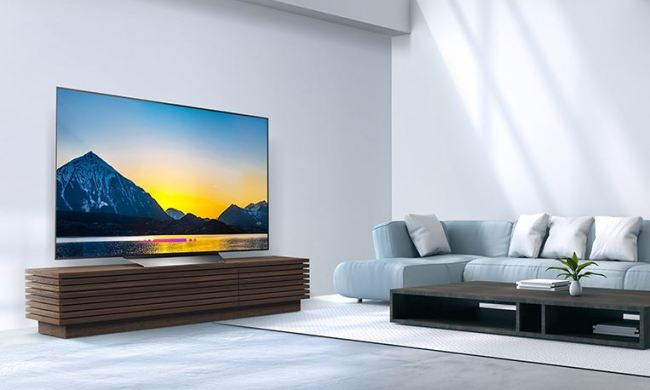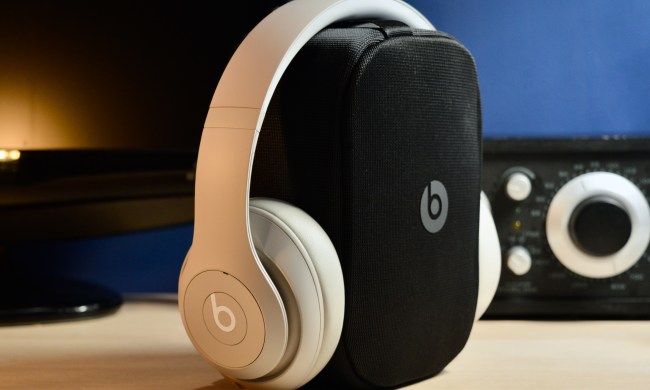On paper, Erik Young seems like the last person who would end up attempting to disrupt the $27 billion market that is the global loudspeaker industry.
As a Black man who grew up in a single-parent home, in a neighborhood where drug dealers were the most successful businesspeople, the odds favored a life of crime and prison sentences, not a career as a pioneer in wireless audio. But Young has made a pattern of defying the odds, and his company, Audios, is an all-out assault on some of the biggest, most established audio brands in the world.
If you’ve ever been to a wedding, bar mitzvah, or a conference, you’ve probably noticed the professional PA speakers mounted on top of robust tripods and set up around the perimeter of the dance floor or seating area. But what you may not have noticed are the hundreds of feet of cabling that snake in between these speakers and the audio source — usually the DJ’s mixing board.

If the audio professional has done a decent job, these cables are secured to the floor, usually with gaffer tape or small strips of carpet so they don’t become tripping hazards. Those cables can be a significant investment and they can suffer a lot of abuse over time, which adds to the ongoing costs of running a pro audio business.
A few years ago, Young took careful note of this problem and decided to use his expertise as a computer engineer to find a solution. His answer is Audios, a line of fully wireless professional PA speakers that say adios to both power and audio cables, massively simplifying the setup of live events and making them safer, too.
“It takes 80% more time to set up with cables versus wireless,” Young told Digital Trends via Zoom. “Cables are expensive. They cost between $50 and $200 per speaker, and each speaker needs two cables.”

How the Audios wireless PA system works
On the outside, Audios speakers, which Young expects will sell for $1,000 each when they launch later this year, look like any other professional PA units from companies like JBL, Bose, or QSC. But behind the commercial-grade cabinets is Young’s patented system for lossless wireless audio. Much like Sonos, it uses a mesh network to create invisible signal pathways between multiple speakers, but Audios doesn’t require a Wi-Fi network, and it’s agnostic when it comes to the source. You can use Bluetooth, Wi-Fi, or wired inputs and Audios will adjust accordingly.
When convenience matters more than audio quality, a Bluetooth source like a phone or tablet is all you need. But Audios supports up to 24-bit/192kHz lossless resolution over its network if your event calls for the very best sound.
You can initiate the mesh network in Audios speakers by wiring a single unit into the mixing board, or you can buy a dedicated Audios transmitter, which gives you much greater speaker placement flexibility. Currently, the Audios system is limited to 16 speakers, with a maximum coverage of 100 feet from the transmitter or wired speaker.

Young has solved the power problem by equipping each Audios speaker with a set of hot-swappable lithium-ion batteries. “The batteries are seven times larger than the largest battery of any competitor that we were able to find,” Young said. At full charge, these cells can keep the speakers running for up to seven hours at 100 watts of power, or just over an hour at the speaker’s RMS 600-watt output. The Audios speakers are capable of an impressive maximum sound pressure level (SPL) of 132 decibels — only slightly quieter than a jet airplane taking off.
Sometimes a wireless solution is not ideal. There can be venues where wireless interference is simply too great to guarantee a flawless connection between speakers. In these scenarios, you can still use audio and power cables to run the Audios as traditional wired speakers.
One of these situations is live music. Young says the system works perfectly for presentations, speeches, and recorded music, but because of the 10-millisecond latency inherent in the Audios wireless technology, musicians might notice the delay between the notes they play and the notes they hear, which would create awkward playing conditions.
You would think that given how long wireless audio technology has been around, a major brand would have already developed an Audios-like product, but Young seems to have found a weakness in the pro audio industry. Right now, the most powerful fully wireless speaker we’ve found is the New Soundboks, which is Bluetooth-only and has a five-speaker limit for wireless pairing.

Lacking a better solution, many DJs have resorted to using wireless transmitters and receivers as a workable but expensive alternative. But these hacks still don’t address the power problem.
Young isn’t alone in thinking there’s a lot of potential for Audios. He’s attracted some impressive talent to help him get his company off the ground, including his lead investor, Charles Huang, the co-creator of the Guitar Hero franchise of rhythm video games.
For the design of the speakers, Young worked with Y Studios, the company behind the design of many Sonos products, while the Audios transducers and sound quality received a helping hand from another Sonos veteran, Dan Wiggins, the audio engineer who helped develop the Sonos Play:1 wireless speaker.
The roots of Audios: Breaking the VC barrier
Launching a new company — especially one that plans to build its own hardware — is a huge challenge, but Young is no stranger to adversity.
Young grew up surrounded by drug dealers, a peer group he respected and admired. His earliest ambitions were to follow in their footsteps. “I didn’t want to be a rapper like Lil’ Wayne or an athlete like Michael Jordan,” Young said. “I wanted to be a drug dealer.”
The opportunities presented by the streets almost took a permanent toll on his life’s trajectory. After Young was nearly arrested at 17, his father, a longtime drug dealer, decided to take an active role in his son’s life and guided him away from the scene. “Son, you got a brain,” Young recalls his father saying. “We have felonies. It’s not too late for you. It’s too late for us.”
Young listened and enrolled in college, eventually earning a computer engineering degree from the University of Central Florida. From there, he landed a job at HP in Houston, a gig that gave him the experience and connections he would need to found Audios.
Black founders face an enormous uphill battle compared to their white counterparts. Young estimates that in 2020, 97% of venture capitalist funding went to non-Black founders, but it might be even worse than that. A report from Crunchbase says that as of Aug. 31, 2020, Black and Latinx founders raised $2.3 billion in funding, representing just 2.6% of the total $87.3 billion in funding that had gone to all founders by that date.
When I asked about this rampant discrimination, Young simply smiled, and said, “I’ve been discriminated against my whole life.” But from an early age, he learned to channel his anger over injustice into a drive to succeed. When faced with a high school teacher who questioned his abilities in math and even accused him of cheating, Young redoubled his efforts. “I started getting hundreds on every quiz, every test,” he said.
Today, he sees the systemic discrimination and racism in the venture capital world as just one more obstacle to overcome. “It’s like child’s play to me now. I’m not emotional about it in any way because these are just the rules of engagement. You can look at these obstacles as a failure or a barrier, or you can look at it as a problem that has to be solved.”
By any measure, Young has been remarkably successful in overcoming the VC barrier. In addition to Huang’s backing, Andy Rachleff, co-founder of Benchmark and CEO of Wealthfront, has also thrown his hat into the Audios ring. But that doesn’t mean Audios has all of the funds it needs, so Young and Huang are doing a round of crowdsourced investment via Republic.co.
To date, Audios has raised just shy of $400,000 from 1,350 investors, many of whom, according to Young, have only put up $100 in funding.
Young’s goal is to get to $1 million, but he reckons he can still make a go of it with half that amount.
We’ll be keeping tabs on Audios as it progresses to its goal of getting its wireless speakers in the hands of the pros who need them the most.



